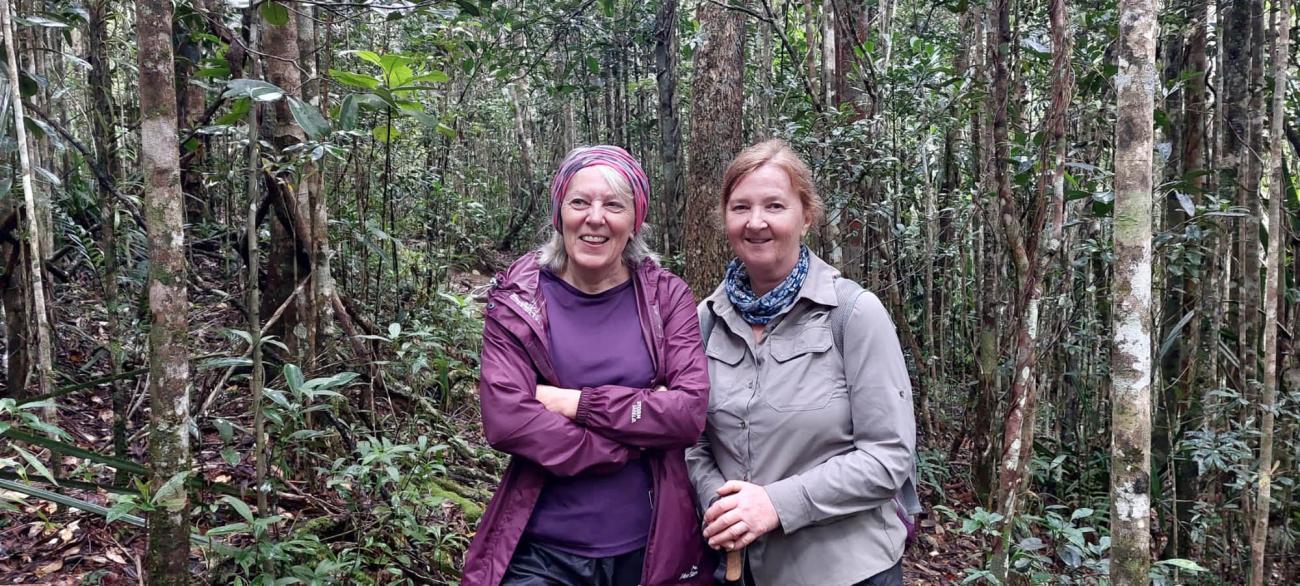‘Mora Mora’ with the lemurs in Madagascar!
“Expect the unexpected and treat it as an adventure”. These were almost the first words we heard from Olivier, our excellent and very experienced guide on the ‘Madagascar: Lemurs and National Parks’ tour. He also advised we get used to the Malagasy sentiment of ‘Mora Mora’ (take it easy) as things do not move quickly here! I was lucky enough to be sharing this experience with five other like-minded travellers from Jersey (Channel Islands), England, Belgium and the US. We had all come for the lemurs but came away with so much more including:
- Staying and hiking in rainforests that look, feel and sound so beautifully alive with lemurs, chameleons and frogs
- Staying further off the beaten track in the remote Camp Catta, the broad valley at the foot of the Adringata Massif, looking up at the impressive granite mountains whilst families of lemurs wandered through the camp
- Glamping at the beautiful Satrana Lodge, at Isalo National Park, in structured and sturdy tents on raised platforms which blend into the surrounding areas tucked beneath a sandstone massif and taking advantage of the opportunity of an outdoor shower – feeling like Meryl Streep in ‘Out of Africa’!
- Standing in the spiny forest near Ifaty marvelling at the otherwordly baobab trees
- A greater understanding of this beautiful and diverse country and how we as tourists can support their conservation efforts
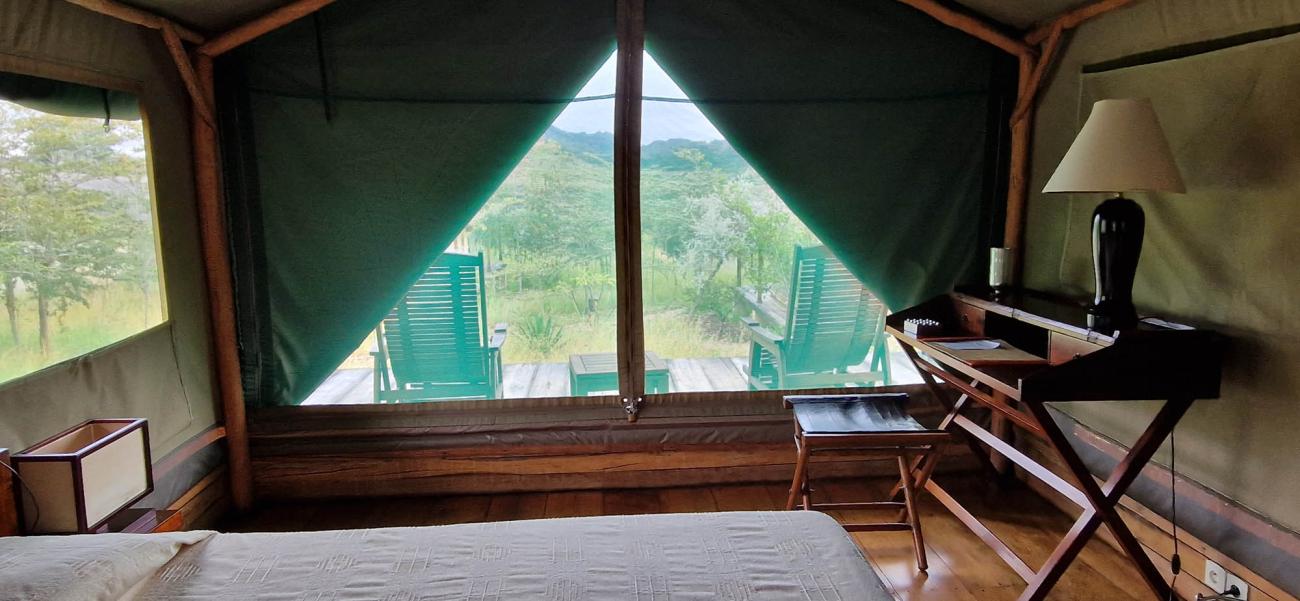
Over 15 days, our trip took us through rainforests, villages, national parks, canyons and a welcome break at the coast (for a day of chill time), staying in a variety of characterful accommodations and experiencing mostly excellent food – as vegetarians, my friend and I were really well catered for with lots of choices. This is a full-on adventure trip with early starts and long drives on dodgy potholed roads but with our excellent driver Dama, mechanic Tik and of course, Olivier, we were well looked after. The journeys were never boring as there was so much to look at as we passed by diverse scenery (rice fields, hills and valleys, villages full of colourful markets) and the always smiling and waving village children. Olivier kept us entertained with stories from the different tribes of each area we passed through.

Starting in the capital Antananarivo (Tana) we made our way gradually south, exploring each area by van or on foot with one internal flight. The flight experience is where we needed to expect the unexpected – with only one aeroplane covering the whole of the country and ten airports, be prepared for last-minute flight changes. Luckily for us, our flight change gave us an extra morning by the coast! For Camp Catta, we needed to leave our trusty bus behind and transfer to an open-backed truck for a couple of hours there and back sharing the bumpy, uneven track with zebu, school children and farmers. The treks and hikes can be tricky because of the terrain, (occasional leech!) and heat so bring good waterproof hiking shoes and long trousers. The rainforest national park trails are well marked but the guides will take you off-piste when they spot the lemurs and you may find yourself crashing through the undergrowth.


Aah yes, the lemurs. I had taken my binoculars but I didn’t need them. They were everywhere and were curious about humans. I lost count of the number of species of these beautiful creatures we saw either walking past us, leaping around the trees, dancing sideways across a clearing or quietly feeding on the branches. From the tiny mouse lemur on our night-time rainforest walks, and the dancing Sifakas on our forest walks to the Indri, the largest lemur alive today, in the rainforest with all the sizes in between, it was always a thrill to see another one.
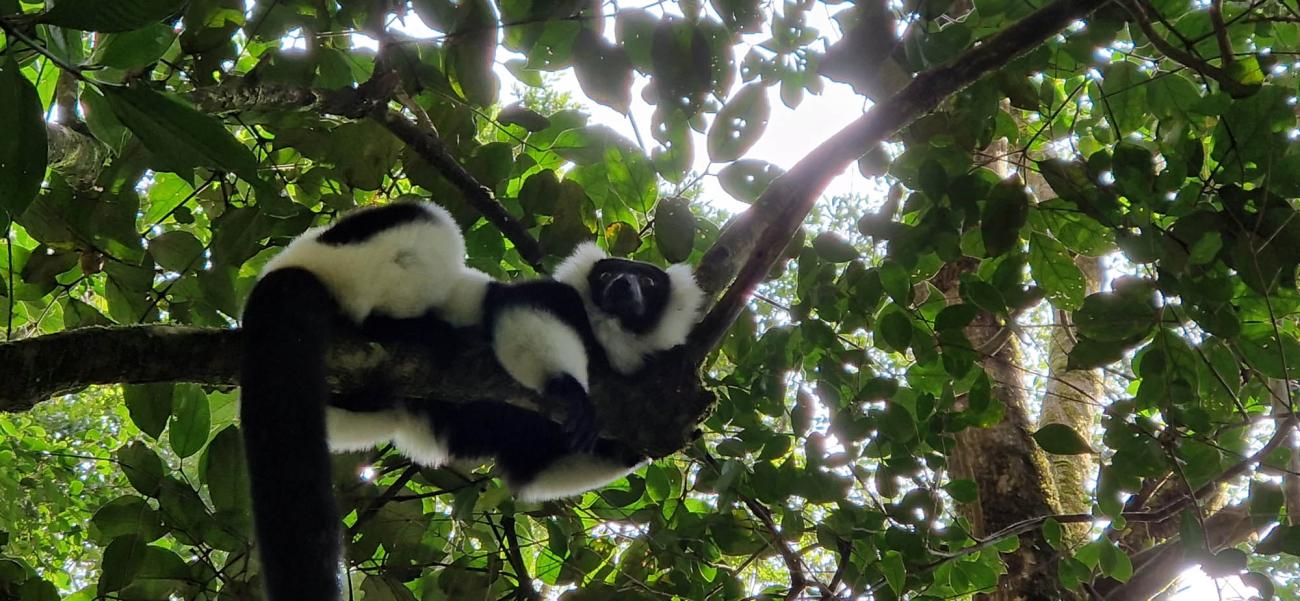
Two encounters will stay with me forever. In Camp Catta, our lodges were right on the edge of the forest. I opened the door of my cabin one morning to find a ring-tailed lemur sitting with its back to me just outside my door. As I watched, his family joined him and they continued to play right in front of me. Sitting on my doorstep watching them play and then wander off, it was hard not to feel at peace with the world.
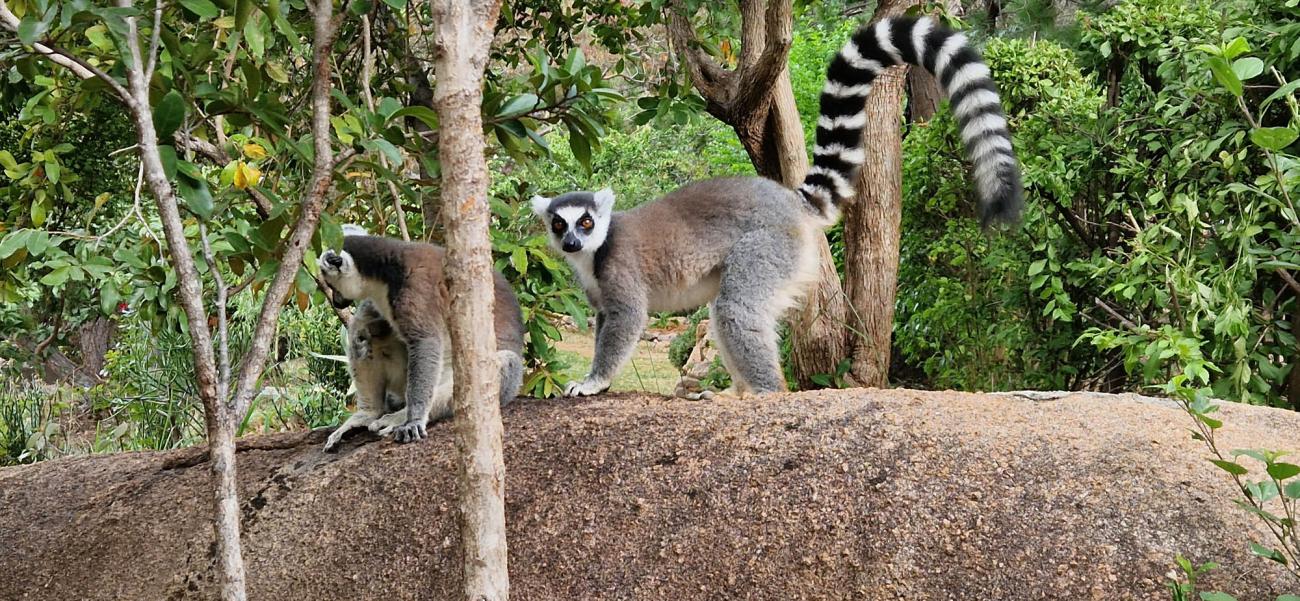
The second encounter was in the rainforest of the Andisabe National Park towards the end of our trip. We had spent three hours searching for the Indri lemur, having heard them call in the distance. We finally found a family group and watched them for a while feeding and leaping between the trees. A neighbouring family group started to call out and our guide motioned for us to get ready as ‘our’ group would reply to the call. None of us were prepared for the sheer volume of the haunting sound that started to play out right above our heads. A deep and beautiful sound reminiscent of a whale song. The Indri can never survive in captivity so this is the only place in the world they can be seen – a true privilege. It was such an emotional experience to hear them and to know that here, their numbers are increasing.
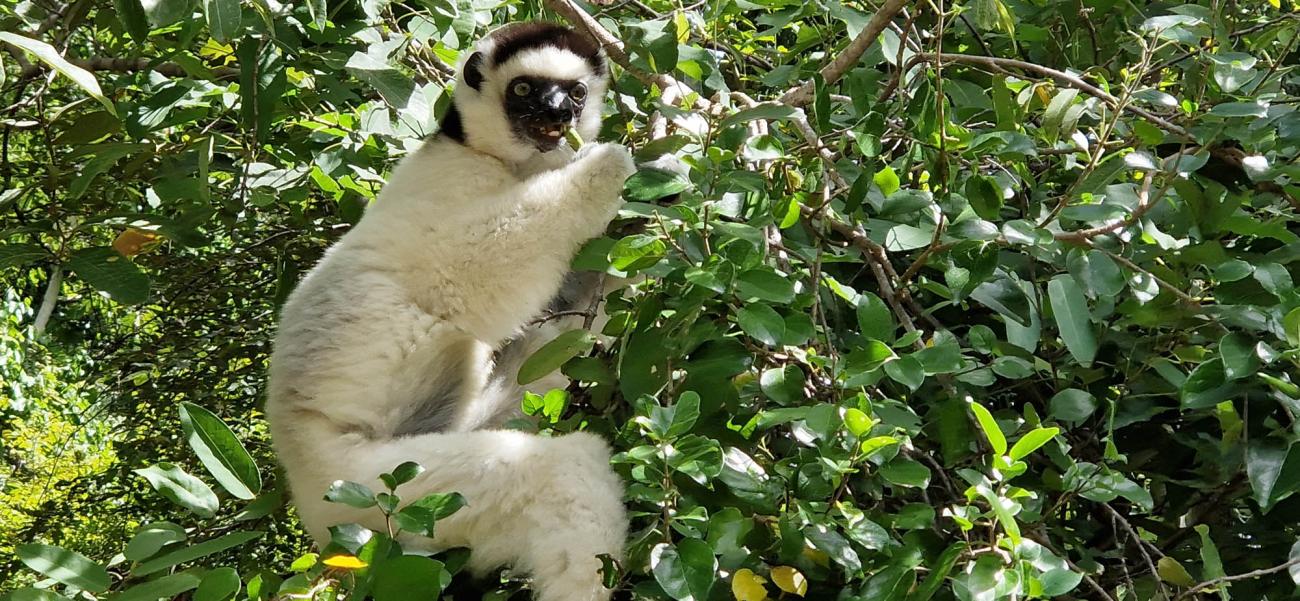
Madagascar is many things. It is tribal, with political instability and funds are not always (or often) spent on the things they should be to improve the infrastructure. It is a poor country and the lack of good roads and transport links can make travel cross country challenging but if you make the effort to come, my goodness, it is so worth it.
Because this is a country that is full of people working hard and trying hard, Madagascar was once known as the ‘green island’. It has suffered from severe deforestation mainly for agriculture so necessary to feed the population which means it is now known as the ‘red island’. But there is hope here. There are large and growing areas of protected rainforests, the lemur population is increasing and there are both government and community-funded education programmes to encourage the next generation to understand the beauty, richness and importance of their biodiverse jewels; the rainforests and their amazing inhabitants.

On our last day, it felt only fitting that we visited a reforestation project aiming to plant a corridor of forest connecting two areas of rainforest. We each planted a tree – mine was the Cryptocarya crassifolia’, the food of the Indri – for future generations of humans and lemurs to enjoy. Olivier had told us that the colours of the Malagasy national flag were red for royalty, white for purity and green for hope that the island may once again become the Green Island. Listening to the passion of the village people living around and benefitting from the rainforests this felt like a real possibility. I have come home with my heart and soul full.
